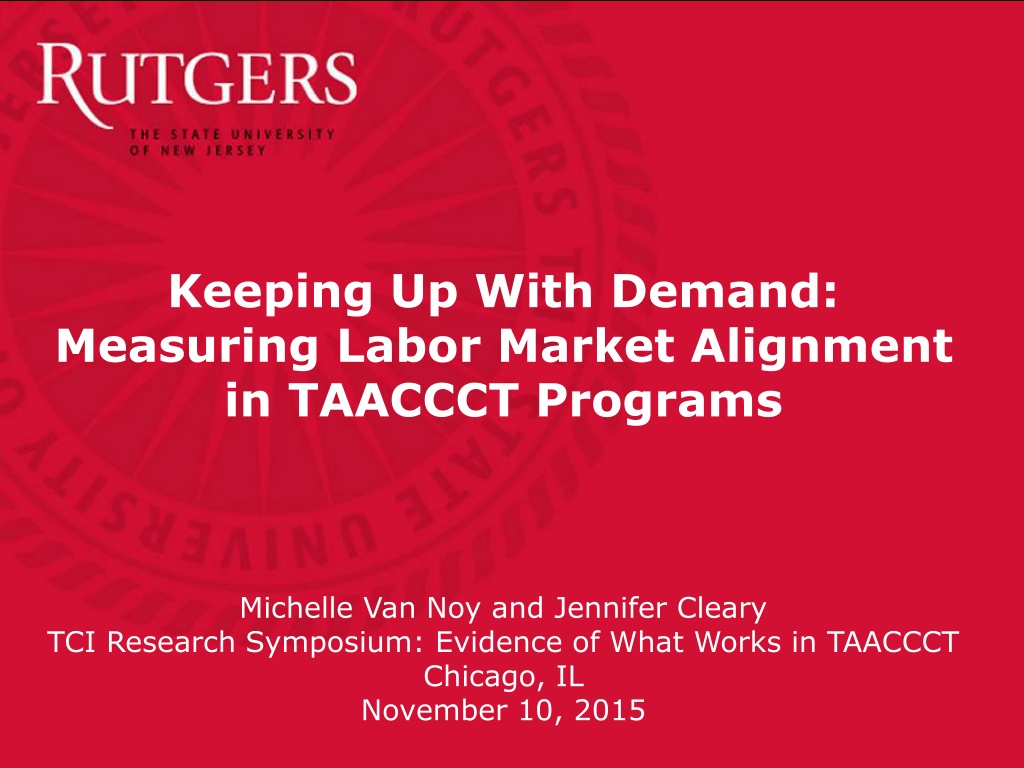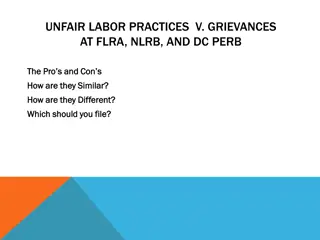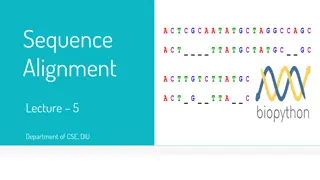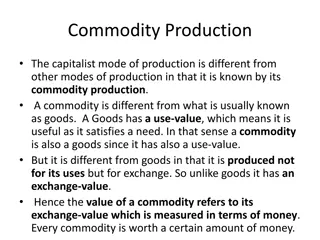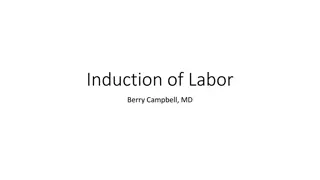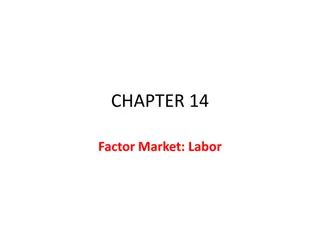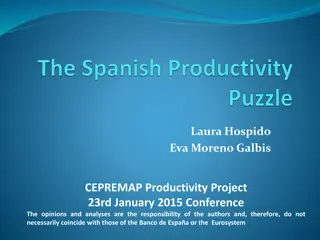Understanding Labor Market Alignment in Higher Education: A TAACCCT Perspective
This research paper delves into the concept of labor market alignment (LMA) in higher education, focusing on its importance in improving outcomes for both employers and students. By applying a framework developed by Cleary & Van Noy, the paper aims to analyze the impact of LMA activities in the context of TAACCCT programs. It discusses the goals of alignment, various approaches, stakeholder needs, outcomes, and the need for continuous improvement while preserving the core missions of higher education institutions.
Download Presentation

Please find below an Image/Link to download the presentation.
The content on the website is provided AS IS for your information and personal use only. It may not be sold, licensed, or shared on other websites without obtaining consent from the author. Download presentation by click this link. If you encounter any issues during the download, it is possible that the publisher has removed the file from their server.
E N D
Presentation Transcript
Keeping Up With Demand: Measuring Labor Market Alignment in TAACCCT Programs Michelle Van Noy and Jennifer Cleary TCI Research Symposium: Evidence of What Works in TAACCCT Chicago, IL November 10, 2015
Keeping Up With Demand: Measuring Labor Market Alignment in TAACCCT Programs Introduction Increasingly, policy initiatives, including TAACCCT, focus on having colleges align their programs with the needs of the labor market to improve outcomes for employers and students. However, labor market alignment (LMA) in higher education is a poorly understood concept. Cleary &Van Noy (2014) performed an extensive literature review to develop a framework for understanding LMA. This paper draws on this framework and, using it as a research lens, applies it to the synthetic analysis of two ongoing TAACCCT process evaluations. 2
Keeping Up With Demand: Measuring Labor Market Alignment in TAACCCT Programs Goals of this paper To provide an introduction to the Cleary/Van Noy LMA framework To demonstrate the potential application of the LMA framework to process evaluations in the community college & TAACCCT contexts. To provide TAACCCT and other community college researchers with tools to examine a wider range of activities and outcomes to understand the impact of LMA activities. 3
Keeping Up With Demand: Measuring Labor Market Alignment in TAACCCT Programs Seems like a simple feat of engineering ..yet, alignment is not well understood The goals of alignment, and how they reflect stakeholder needs The range of approaches to alignment Settings and systems where alignment strategies are implemented Link between alignment approaches and outcomes How to balance with liberal education mission of higher education Need for information on what works and how to improve outcomes and preserve core missions of higher education.
Keeping Up With Demand: Measuring Labor Market Alignment in TAACCCT Programs Prior Research Characteristics of labor market responsive community colleges, Harmon & MacAllum (2003) and MacAllum & Yoder, 2004 Identification of internal and external factors related to community college approaches to alignment, Adams, Edmonson & Slate (2013) Broad framework for labor market alignment across institution types and levels, focused on LMA practices and outcomes, Cleary &Van Noy (2014) 5
Keeping Up With Demand: Measuring Labor Market Alignment in TAACCCT Programs What is Higher Education Labor Market Alignment? Activities and outcomes to ensure that higher education institutions graduate the correct numbers of graduates with the necessary skills for the job market in a way that supports students career goals and is consistent with institutional mission and labor market conditions. Job Vacancy Alignment Getting the numbers right Skills Alignment Ensuring competency
Keeping Up With Demand: Measuring Labor Market Alignment in TAACCCT Programs Alignment Can Include Curricular and Co-Curricular Areas Job Skills Alignment Vacancy Alignment Curricular Program selection and enrollment management Program content and curriculum development Instructional & assessment strategies Co-Curricular Work-based learning activities Student advisement and support services X X X X X X
Keeping Up With Demand: Measuring Labor Market Alignment in TAACCCT Programs 8
Keeping Up With Demand: Measuring Labor Market Alignment in TAACCCT Programs Studying LMA Processes at work in TAAACCCT Research Questions To understand the implementation of LMA, we focus on the three main processes of LMA: What approaches to the LMA processes of data collection /validation, incorporation, and relationship building did case study colleges engage in? Data collection/validation, To what extent were the case study colleges successful in the implementation of these LMA processes? Incorporation into curricular and co- curricular activities Relationship-building What challenges did the case study colleges encounter with these LMA processes? 9
Keeping Up With Demand: Measuring Labor Market Alignment in TAACCCT Programs Cases and Methods Data Collection: Multiple site visits including structured interviews of program staff and key stakeholders Document reviews of policies, procedures Observations of program activities Focus groups with students Case Study Evaluations: Case #1 reforms to multiple workforce programs in a range of fields Case #2 reforms to programs in manufacturing and utilities 10
Keeping Up With Demand: Measuring Labor Market Alignment in TAACCCT Programs Findings: Data Collection Use of labor market data to determine focus for TAACCCT programs to ensure programs met students wage needs Use of multiple existing data sources Gathered direct information on skill demand using substantially different approaches DACUM vs. one-hour focus groups Other information sources informed programs including industry credentials and industry-based instructors 11
Keeping Up With Demand: Measuring Labor Market Alignment in TAACCCT Programs LMA Approaches: Data Collection Data Collection Case #2 Case #1 Used multiple sources of existing data Used multiple sources of existing data Conducted in-depth DACUM and employer panels Conducted one-hour focus groups with employers 12
Keeping Up With Demand: Measuring Labor Market Alignment in TAACCCT Programs Findings: Incorporation-curricular Demand-driven program selection Established basic admissions criteria and enrollment targets Involvement of employer in admissions and instruction Guided instructors to emphasize some topics more than others Efficiently translating detailed data into curriculum was a challenge 13
Keeping Up With Demand: Measuring Labor Market Alignment in TAACCCT Programs LMA Approaches: Incorporation-Curricular Incorporation - Curricular Case #1 Case #2 Program selection is demand driven Program selection is demand driven DACUM/employer panel input guided instructional focus but challenging to translate into curriculum Used curriculum from national and regional employer-recognized certifications DACUM/employer panel input informed admissions standards Employers involved in admissions interview 14
Keeping Up With Demand: Measuring Labor Market Alignment in TAACCCT Programs Findings: Incorporation-co-curricular Job shadowing to learn about the industry Employer hosts needed guidance for job shadowing Intensive on the job experience requirement - varied Early involvement of employers in program led to job offers Setting expectations among students was a challenge Jobs at wages lower than standard Students financial needs and prior work experience Some employers associated the program were not hiring or had inappropriate working conditions 15
Keeping Up With Demand: Measuring Labor Market Alignment in TAACCCT Programs LMA Approaches: Incorporation-Co-curricular Incorporation Co-curricular Case #1 Case #2 Job shadowing integrated in program Job shadowing integrated in program Intensive practicum required No practicum or internship Job placement done by program staff, sometimes via job shadowing and practicum experiences Job placement done by program staff, sometimes via initial admissions interview Setting student expectations about jobs was a challenge Setting student expectations about jobs was a challenge 16
Keeping Up With Demand: Measuring Labor Market Alignment in TAACCCT Programs Findings: Relationship Building Intensive employer involvement in the data collection and/or incorporation process was also important for relationship building Multiple staff worked together to make contacts with local employers and gradually build relationships by engaging employers in a range of activities. The approach to building employer relationships vary was centralized rather than disbursed amongst instructors With job placement some instructors take an active role in placement 17
Keeping Up With Demand: Measuring Labor Market Alignment in TAACCCT Programs LMA Approaches: Relationship Building Relationship Building Case #2 Case #1 DACUM and employer panels led to relationship building Early involvement of employers in admissions and other activities led to relationship building Multiple centralized staff conducted outreach Centralized staff and local college staff conducted outreach 18
Keeping Up With Demand: Measuring Labor Market Alignment in TAACCCT Programs Conclusions Preliminary attempt to apply LMA framework to TAACCCT evaluation synthesizes lessons across projects Findings demonstrate that this framework can offer a common language to make sense of commonalities and differences in approaches to LMA Further analysis across other TAACCCT projects may offer deeper insights into LMA 19
Keeping Up With Demand: Measuring Labor Market Alignment in TAACCCT Programs Contact Information Michelle Van Noy mvannoy@rutgers.edu 848-445-4734 Jennifer Cleary jcleary@docs.rutgers.edu 848-445-9291 20
